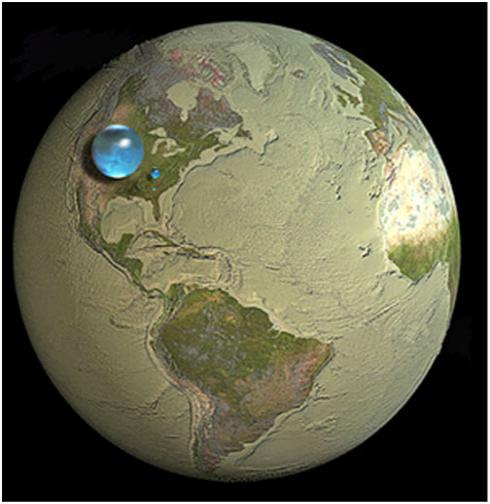Not only do they suffer choking smog day after day, but, as The Business Times reports, sixty per cent of underground water in China which is officially monitored is too polluted to drink directly, state media have reported, underlining the country's grave environmental problems.
As The Business Times reports,
Sixty per cent of underground water in China which is officially monitored is too polluted to drink directly, state media have reported, underlining the country's grave environmental problems.As we noted previously, The World Bank's Ismail Serageldin puts it succinctly: "The wars of the 21st century will be fought over water."
Water quality measured in 203 cities across the country last year rated "very poor" or "relatively poor" in an annual survey released by the Ministry of Land and Resources, the official Xinhua news agency said late Tuesday.
Water rated "relatively" poor quality cannot be used for drinking without prior treatment, while water of "very" poor quality cannot be used as a source of drinking water, the report said.
The proportion of water not suitable for direct drinking rose from 57.4 per cent from 2012, it said.
That old axiom that the earth is 75% water... not quite. In reality, water constitutes only 0.07% of the earth by mass, or 0.4% by volume.There's no doubt that this is a looming crisis we cannot avoid. Everyone has an interest in water. How quickly we respond to the challenges ahead is going to be a matter, literally, of life and death. Where we have choices at all, we had better make some good ones.
This is how much we have, depicted graphically:
What this shows is the relative size of our water supply if it were all gathered together into a ball and superimposed on the globe.
The large blob, centered over the western US, is all water (oceans, icecaps, glaciers, lakes, rivers, groundwater, and water in the atmosphere). It's a sphere about 860 miles in diameter, or roughly the distance from Salt Lake City to Topeka. The smaller sphere, over Kentucky, is the fresh water in the ground and in lakes, rivers, and swamps.
Now examine the image closely. See that last, tiny dot over Georgia? It's the fresh water in lakes and rivers.





I have long believed that the way "the west" and the PTB are going to "manage" China's expanding power is to simply allow them to poison themselves. Like the serpent in the garden, we have allowed China to believe that unlimited prosperity comes without social cost and environmental responsibility. By the time that the Chinese authorities overcome their inertia enough to address the crisis, it will be too late. The Chinese people will then turn on their leaders and it will be a disaster of "biblical" proportion.